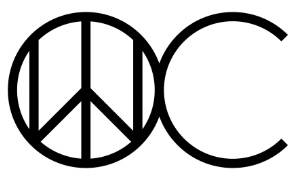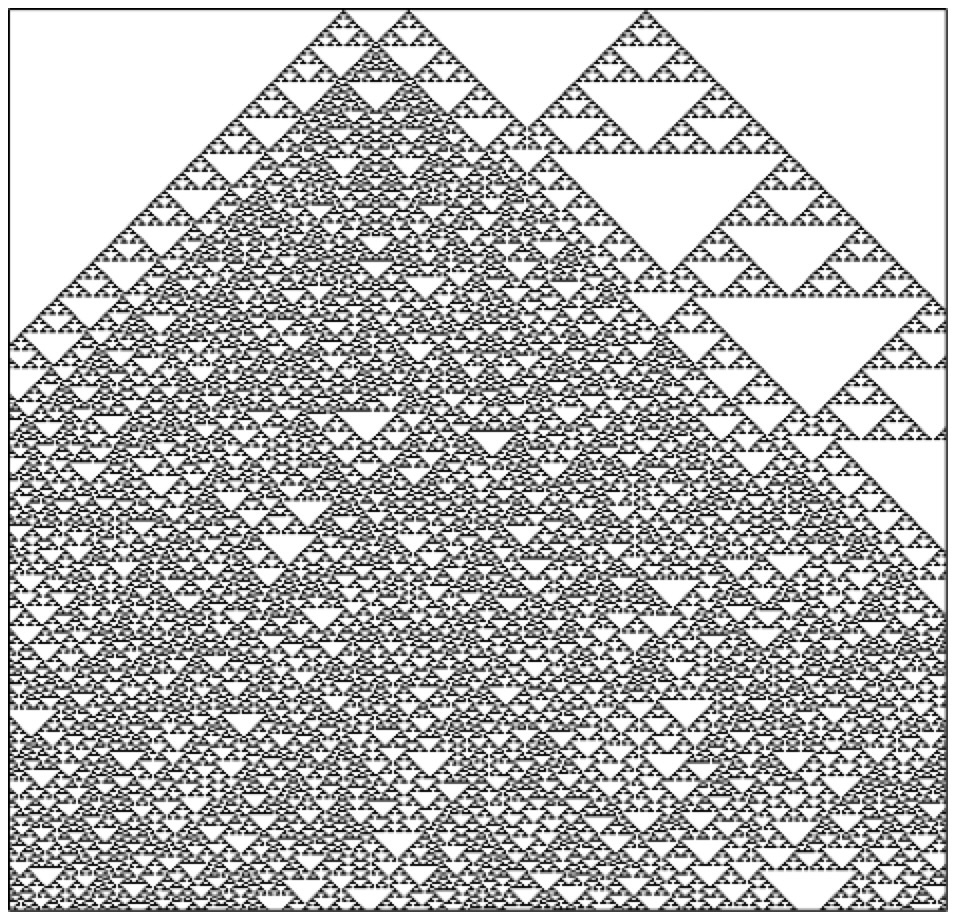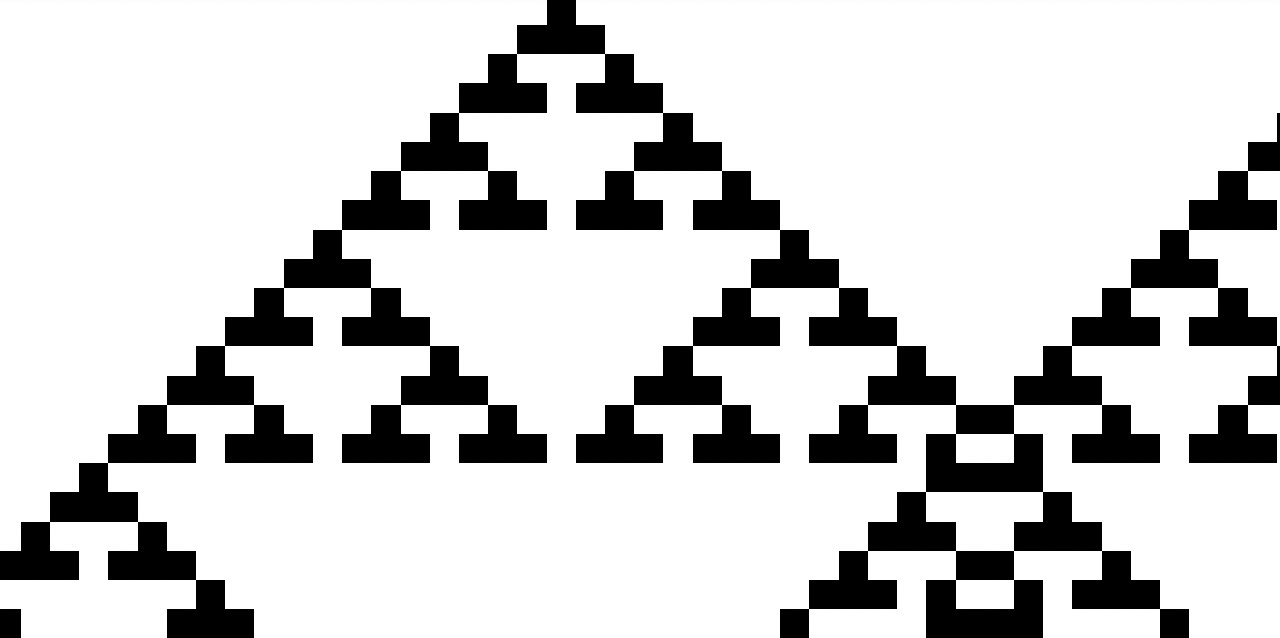Manual Piece: a world piece computer.
 TM
TM
A world piece computer is a piece computer at the local or individual scope. A piece computer takes pieces in a world, then does stuff with them to make the world inhabitant’s state of inner piece better by their definition. This is done by maintaining the universal piece, which is a simple set of functions. Behaving like a cellular automaton, a world piece computer optimizes the arrangement and configuration of world pieces within its world, interacting with local world piece computers on an as needed basis.
Subpiece: Composition.
A world piece computer is composed of an inhabitant (world owner) and the set of world pieces contained within that world. In the case of a world piece computer, the inhabitant is a Human with a functioning brain. We call this inhabitant an operator, which we will cover more in a later section. When the computer’s operator performs actions on, and manages world pieces, we call the acting operator The Individual. The Individual is what results when an operator assumes control of the universal piece process (what we call the universal piece) that the world piece computer is running at the time. The universal piece, which we will get to later, is what we mean when we say ’treat peace as a process, not a result’. The Individual is a Humane form, a brain, with a mind conditioned in terms of this peace process.
Subpiece: Configuration.
In any given moment, a world piece computer has a current world state that we often refer to as the configuration. This refers to the current arrangement and integration of all the world pieces in the operator’s particular world. The configuration of a world piece computer does not tend to involve pieces that fall outside the purview of an operator’s world. In other words, the configuration does not include things that are not significant to the computer’s operator. (This does not however, mean that there do not exist pieces that have a significant impact on The Individual without their knowing the significance. The configuration is important because it defines and determines the current state of inner peace for operators at the local and individual scopes (depending of course on the computer).
Subpiece: Three components.
The operator and world pieces within a world piece computer—any piece computer for that matter—form three components, by definition. These are, the pieceprocess, the piecebrain, and the piecespace. When The Individual is operating a piece computer, both their physical brain and the surrounding environment contain all three components of the computer.
Piecespace is the computer’s memory. Piecespace within the operator’s brain is the mind space, containing memory pieces and other abstract nonphysical pieces. Outside the brain, piecespace is the physical surrounding world, containing objects and people.
Piecebrain is the computer’s processor, responsible for managing the universal piece, peace process. Piecebrain within the operator’s brain is the mindspace containing active pieces like beliefs, or habits, or preferences to name a few. Outside the brain, piecebrain might be a piece that is a person who provides advice, or a piece might be pair of dice in the case the operator needs some random input in the peace process.
The most important component is the pieceprocess. Pieceprocess is the singular object of the peace process itself. Pieceprocess is how pieces are arranging, what pieces are doing. A process piece is much harder to abstract because it involves taking motion and treating that as an object or a piece itself. For example, for me hiking is a piece that is part of my pieceprocess. When my piecebrain determines my pieceprocess is running roughly, having a hard time arranging my world pieces, then it will elect to switch my peace process to orient my hiking piece in the forefront of my attention span. Eventually my pieceprocess will snap onto the hiking piece, and I will find myself out in the mountains going for a hike to give my pieceprocess greater space to organize mental piecespace pieces. Pieceprocess pieces are often states of being or doing.
Subpiece: Plurality.
It is important to hold the greater issue at hand clearly in place: world peace is not a reasonable term because there are too many worlds. Thus, at the local and individual scope, we must account for a plurality of worlds, each irreducibly unique by virtue of the people and different combinations of people that comprise a world.
In terms of world piece computers, there exists (at least) one world piece computer per operator, and there exist additional computers, one per collection of individual operators forming a unique instance of The Individual, in addition to themselves. Each world piece computer has a different set of world piece that it manages, and each has a different version of the peace process it runs as a computer.
Subpiece: Inner peace.
The product of a world piece computer is defined as inner peace, which corresponds to a particular set of qualifying traits of ’peace’, as defined by the individual operating the computer. One product correspondence of a world piece computer might be inner peace is contentment. A different world piece computer product might be inner peace is feeling gratification helping the homeless. Yet another piece computer may define inner peace as the burn of a high-intensity cardio workout, then the corresponding endorphin glow. World piece computer products may have any number of corresponding properties with inner peace.
In any given moment, a world piece computer has what we call a world state. A world state is the current configuration of all world pieces, and this configuration maps to a definite (though subjective) state of inner peace. The peace process—the universal piece—that is the pieceprocess component of the world piece computer, exists to manipulate the current world state with the intention of finding better configurations and discovering new solutions to detractors of inner peace.
Subpiece: Scope.
A world piece computer has a scope in which it operates.
In general the universal piece computer and the system of world piece computers that comprise it, exists in a space with three scopes: individual, local, and global. It is helpful to think of these scopes in terms of matter. The individual scope consists of individual world piece computers. These are like the atomic units—the atoms of the universal piece computer. The local scope consists of atomic units coming together to form composite world piece computers. These are like the molecules, cells, so on. The global scope contains the universal piece computer, which is simply the collection of all interconnected world piece computers. The global scope is the whole—everything.
World piece computers are the plural contents of individual and local scopes. The universal piece computer that we will study next, is the singular entity within the global scope. The global scope contains all the individual and local scopes that exist, by definition.
Subpiece: Cellular automata.
A world piece computer as a computational concept acts as something called a cellular automaton. A cellular automaton is a single cell that acts like a computer, following a set of very simple rules to interact with the local environment that surrounds it. As an example, the simplest type of cellular automata is the one dimensional binary cell. Such a cell may only be black or white. To demonstrate the function, we take a long string of these cells, with some initial color.
For example, we my make the entire string white, except for one black cell in the center of the string. Then we impose a single simple rule. One example of a simple rule is, if either of a cell’s two neighbors is black, then that cell will turn black if not already so. Thus we take that string of cells, and we apply the rule to each cell. This creates the ’next string’, to which we apply the rule again, and again, and again.
The remarkable thing about cellular automata is that these very simple rules and atomic or cellular units end up producing extremely complex behavior. Here is an example, a different rule and initial condition from the example above:

In this picture, the very top row of cells (or pixels) have three black and the rest white. The rule is that if one or the other of a cell’s neighboring cells to either side is the opposite color to that cell, but not both neighbors, then the cell switches color in the next row. From this very simple rule, we see complex textures and patterns emerge as seen above.
Below is a close up of the top cell to the left, where you can see each pixel cell (cellular automaton) and you can track the progress of any one cell as it applies that simple rule, row by row.

The remarkable thing about cellular automata is that each cell is acting as an individual. There is no coordination between cells, rather each individual cell just follows the simple rules and acts in terms of its local environment, or cell community if you will.
One dimensional cellular automata are just one example. A more complex example is the two dimensional cellular binary automata. In the two dimensional case, the the cells create behavior that is lifelike, with pixelized creatures forming and interacting with one another. These type of automata are often called Conway’s Game of Life.
The reason this is important is that world piece computers are likewise a type of cellular automata. In this case, the cell is the world. The rules, are defined by the universal piece. One of the big ideas is to create rules wherein when a large number of world piece computers network to form the universal piece computer, then new behavior emerges that is in whole more peaceful and effective than if those human worlds didn’t take on the simple rules of the universal piece.
In simplest form, the computer architecture of a piece computer is a type of cellular automata. The only real difference is that the cells—the worlds—may overlap and nest (though this of course is not so in timespace). Likewise, compared to the state of a binary automaton, a world piece computer has a much more complex state in any given moment
This concept of emergence is best thought of ’the resulting whole that is greater than the sum of its parts’. This greater whole is how we leverage a world piece computer to make more from the limited time, energy, and people that frustrates our progress toward significant improvements on our state of the Human Condition (that is, significant meaning improvement that is not marginal).
FOOTNOTES:
1 brain: https://en.wikipedia.org/wiki/Brain
2 cellular automaton: https://en.wikipedia.org/wiki/Cellular_automaton
3 emergence: https://en.wikipedia.org/wiki/Emergence
 Blair Munro
Blair Munro